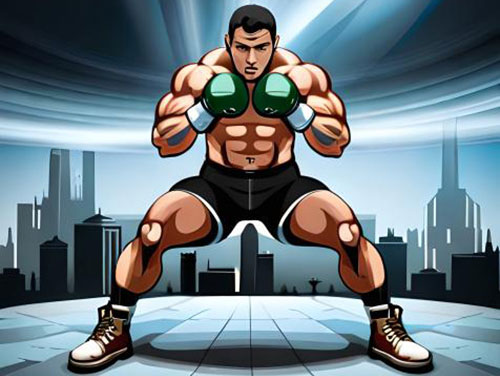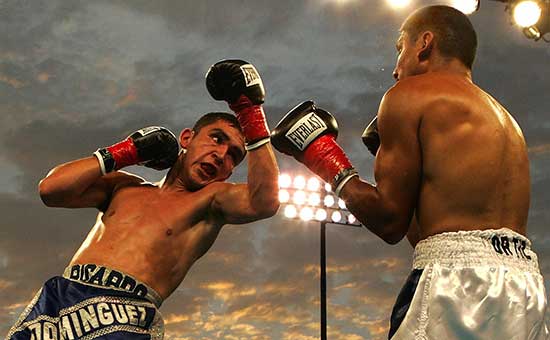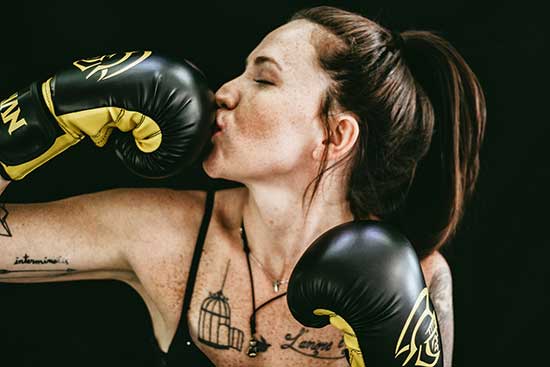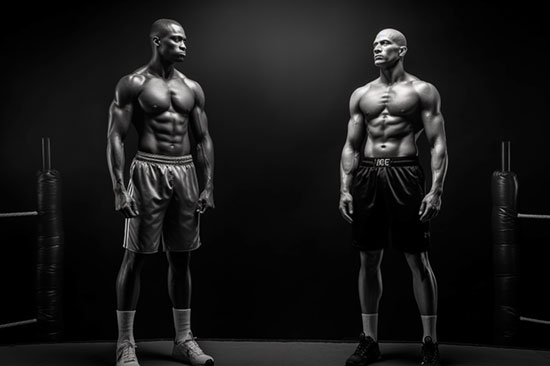f you’ve seen the hit Netflix series Marvel’s Daredevil, then you know that fighting styles exist in a wide spectrum.
While most people are familiar with boxing, some other styles are popular worldwide and taught in various schools, while others are more obscure, only being practiced by select groups.
One of the lesser-known styles is Indonesia’s Silat, which is an all-encompassing form of martial arts with origins as far back as 300 BC. Keep it here.
What are the Common Differences between Boxing and Silat?
Flipping through the channels, you might stumble upon a silat match between two competitors. These fighters are dressed in light attire, and their feet and hands move at incredible speeds.
This is what makes silat such an interesting style to watch, as there’s a lot of spinning and jumping involved.
The action in Silat can be quite flashy, but only because of the fighters’ low stances and spastic movements.
With so many moving parts, these techniques are made possible by ropey muscles that allow their bodies to perform gravity-defying feats.
Unlike its more popular counterpart, boxing is an aggressive stand-up striking art that has evolved throughout the years.
Although it has been around for centuries, it is considered to be a modern sport. There’s only one main goal in boxing: to knock out the opponent.
Contents
Boxing
As previously mentioned, the goal of boxing is to knock out your opponent. For the most part, boxing is a stand-up setup and punch style.
This style gives you a lot of freedom when it comes to striking, as you’re not limited to what punches you can throw.
You’ll be able to use your jab and hook, which are effective when looking for openings within your opponent’s defense.
The most effective moves are the ones that combine speed with strength. It is extremely important for boxers to know their strengths, as it’s essential to have a sound knowledge of your own body.
It takes time and training to achieve this insight into your body.
Advantages of Boxing
- Boxing builds your endurance. You will be able to remain in the ring for a long period.
- You can use a high combination of punches against your opponent.
- Executing a number of punches from all angles, which means that you can easily disguise your next move.
- Flexibility. If put into practice correctly, it will appear as if you’re just hitting air, as the punches come out too quickly for your opponent to react.
Disadvantages of Boxing
- Boxing is a very intricate and technical form of fighting. It takes years to perfect its versatility and movement, making it an exhausting learning style.
- It requires a lot of discipline and effort. This is a very technical form of fighting, which means that you’ll need to have a solid understanding of your body and its positioning within the ring.
- You’ll have to be aware and focused in order to deliver precise blows that can always be on point. As such, boxing is not an ideal self-defense technique, as real-life situations are unpredictable.
Silat
The main goal in silat is to defeat the other fighter by making them surrender or submit by using strikes, locks, or throws.
Silat consists of a series of fighting techniques and strategies used for self-defense in real-life situations.
The name Silat itself means “art” in Indonesian and describes the diverse array of movements and methods from which martial art is made.
It is also known for its flexible stances, giving the user’s body an advantage over an opponent’s. A fighter can be both offensive and defensive at the same time, which makes it more difficult for an opponent to anticipate his next move.
Silat practitioners typically use their legs as much as their arms — some even spin around in a circle to confuse their opponents and throw them off balance.
Insects, trees, rocks, and even stones can be employed for striking during silat training. The hits are usually done with open-hand strikes (palm heel) or with open-hand blocks (palm block).
The latter is to prevent your fingers or hands from getting broken if you block certain strikes.
Advantages of Silat
- Silat has been around for centuries and was used as a weapon in combating heavy odds or stronger opponents. Most martial arts styles today have modernized their fighting styles, specifically boxing and karate, to be done with gloves and safety gear. But silat has stayed true to its roots.
- A tough body: the extensive training involved in Silat makes you physically tougher than most other martial arts competitors.
- Much less stress on joints: this is due to the use of the legs in most silat techniques. Silat movements are also circular and fast, making it harder for an opponent to follow your moves.
- Less competition: Silat is used primarily as a self-defense art instead of competition. Unlike other martial arts, there are no tournaments in which to compete against other fighters.
- More flexibility: if you’ve ever seen a Silat fighter move, you’ll be impressed at how supple their bodies are compared to free-style boxers or even karate or taekwondo practitioners.
The advantage of this stance is that your body is ready to move at any given moment.
Disadvantages
- Silat is hard to master, as it requires a thorough understanding of your body and an in-depth knowledge of your muscle structure. It also takes years to perfect its agility.
- If you are looking to box or compete in other martial arts tournaments, silat might not be the right martial art for you.
- There’s no prize money involved: if you’re looking for competition and glory, then there are plenty of other styles that would suit your needs better.
- The initial training itself is expensive.
Differences between Boxing vs. Silat
- Boxing is usually done using a glove or bare hand. A few martial arts, such as karate, use a combination of wearing gloves and doing without them during competitions. Silat is an entirely barehand art.
- There are many different styles of silat, ranging from the Karate style to the Filipino style to the Malaysian style. Many of these styles have different stances and stances for upper-body punches when compared to their lower-body punches. In Boxing, however, your stance is more or less the same regardless of whether you’re going for an upper-body punch or a lower-body one.
- Silat is a full-body martial art style in which every part of your body is engaged in the fighting. The head and chest are emphasized mainly during strikes. Boxing, on the other hand, emphasizes mainly punches using your arms and upper body. Your legs are used to balance out your body when executing certain strikes.
- There is no similarity between the striking styles of silat and boxing. Boxers tend to use their arms more in punching than their legs, while in Silat, you mainly use your legs.
- The body positioning in Silat is different from that of Boxing. In boxing, you usually stay on your feet if you’re fighting against a standing opponent or if you’re on the offensive side. In Silat, however, you will often fall to the ground when you are being thrown or jumped on, for example, by a mounted opponent.
Similarities between Boxing vs. Silat
- In both boxing and Silat, defensive maneuvers can be used to counter-attack the opponent.
- The driving style in both boxing and Silat is the same, with a quick stride forward, which precedes a blow or to cover the distance if you are retreating.
- The footwork in both types of martial art uses good acceleration of one leg while the other is bent to balance.
What fighting style should I choose and why?
To practice Boxing, we strongly recommend something you are comfortable with.
If you cannot find the style of your dreams, choose something that is well-suited for you:
- If you are looking for a sport to practice in tournaments, then boxing will be a better choice.
- If you are looking for a sport that is more similar to real-life self-defense techniques and to train like real fighters in your free time than boxing, choose Silat.
Conclusion
Both boxing and Silat are excellent martial arts. Each has its advantages and disadvantages. A good fighter will choose the one that suits his style and goals.
Nevertheless, the general recommendation is clear: if your fighting style focuses on speed, agility, and above all, flexibility, Silat is definitely the best option.





